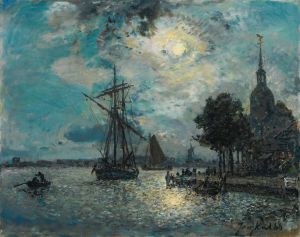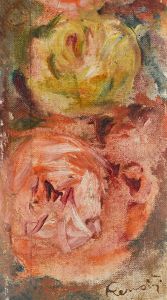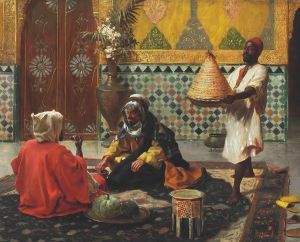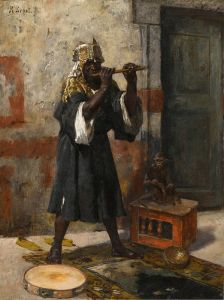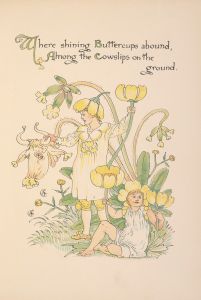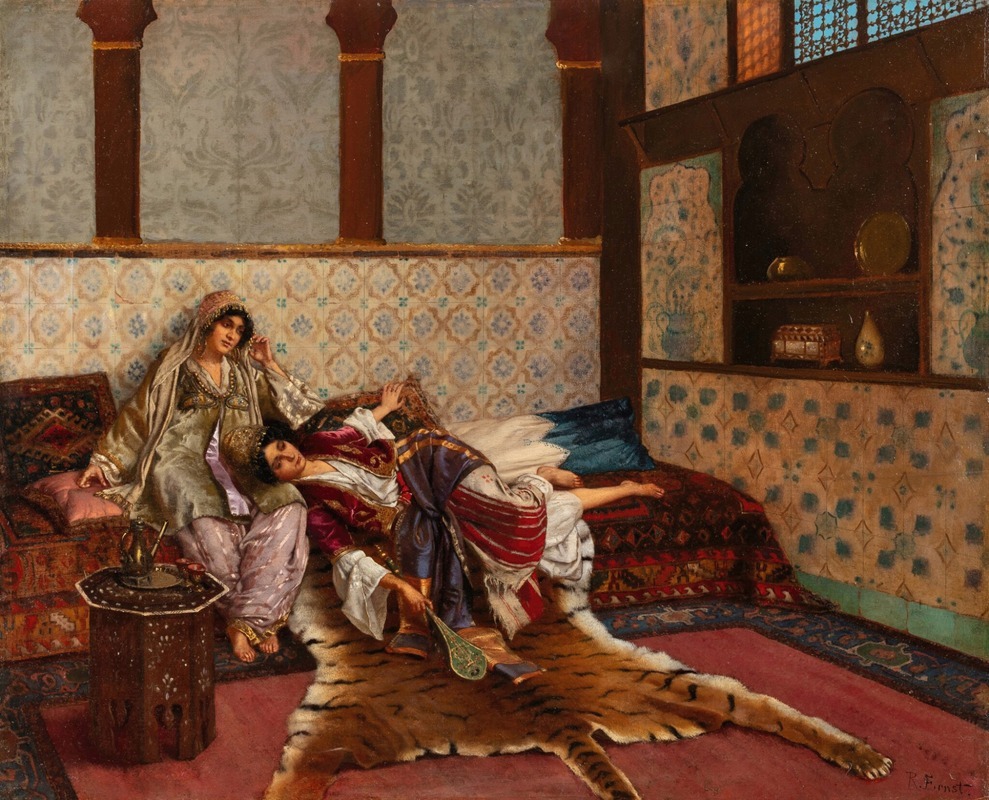
Sweet Lullaby
A hand-painted replica of Rudolf Ernst’s masterpiece Sweet Lullaby, meticulously crafted by professional artists to capture the true essence of the original. Each piece is created with museum-quality canvas and rare mineral pigments, carefully painted by experienced artists with delicate brushstrokes and rich, layered colors to perfectly recreate the texture of the original artwork. Unlike machine-printed reproductions, this hand-painted version brings the painting to life, infused with the artist’s emotions and skill in every stroke. Whether for personal collection or home decoration, it instantly elevates the artistic atmosphere of any space.
Rudolf Ernst was an Austrian painter known for his Orientalist works, which often depicted scenes inspired by the cultures and aesthetics of the Middle East and North Africa. Born in Vienna in 1854, Ernst was part of a movement of European artists who were fascinated by the exoticism and allure of the "Orient," a term used at the time to describe the regions of the Near East and North Africa. This fascination was fueled by the increased accessibility of these regions due to advancements in travel and the expansion of European colonial interests.
Ernst's painting "Sweet Lullaby" is a quintessential example of his Orientalist style. While specific details about the painting's creation, such as the exact year it was painted, are not widely documented, it is known that Ernst's works from this period often featured rich, detailed depictions of domestic and everyday scenes set in opulent interiors. These scenes were characterized by their vibrant use of color, intricate patterns, and a focus on the textures of luxurious materials such as silk, velvet, and gold.
"Sweet Lullaby" typically portrays a serene and intimate moment, often involving figures in a domestic setting. Ernst's attention to detail is evident in the careful rendering of the figures' clothing and surroundings, which are depicted with a high degree of realism and a focus on the play of light and shadow. The painting likely reflects Ernst's interest in capturing the tranquility and beauty of everyday life, as well as his fascination with the cultural elements of the regions he depicted.
Ernst's work is often noted for its romanticized portrayal of the Orient, a common characteristic of Orientalist art. This style has been both celebrated for its beauty and criticized for its stereotypical and sometimes inaccurate representations of Eastern cultures. Orientalism, as a broader art movement, has been the subject of much scholarly debate, particularly regarding its role in shaping Western perceptions of the East and its implications in the context of colonialism.
Despite these controversies, Ernst's paintings, including "Sweet Lullaby," remain valued for their artistic merit and technical skill. His ability to create intricate, atmospheric compositions has earned him a lasting place in the history of art. Today, his works are held in various private collections and occasionally appear in exhibitions and auctions, where they continue to attract interest from collectors and art enthusiasts.
In summary, while specific details about "Sweet Lullaby" are limited, the painting is representative of Rudolf Ernst's broader body of work, which captures the allure and mystique of the Orient through a European lens. His paintings serve as a window into the 19th-century fascination with Eastern cultures and the artistic movements that sought to depict them.






